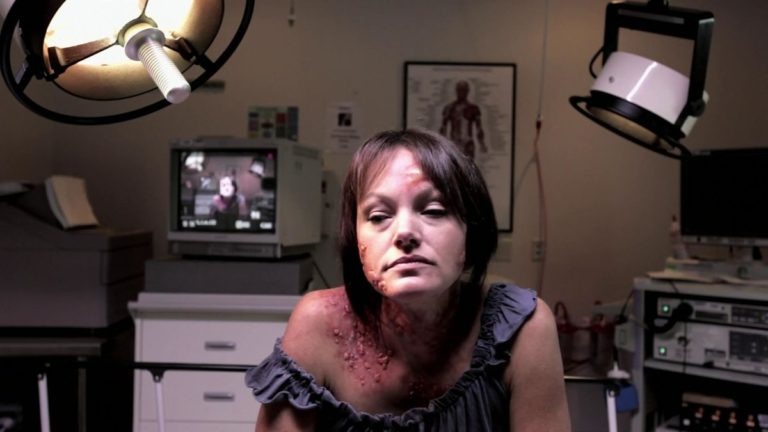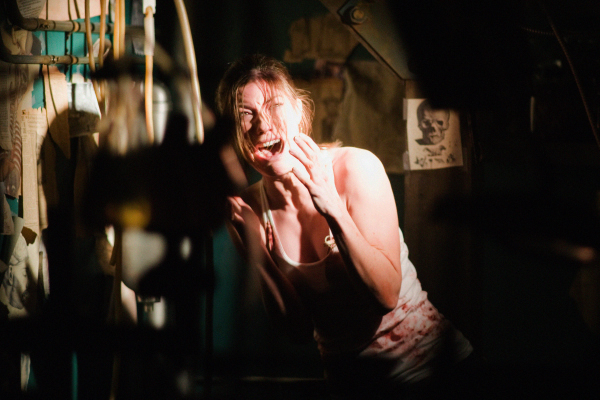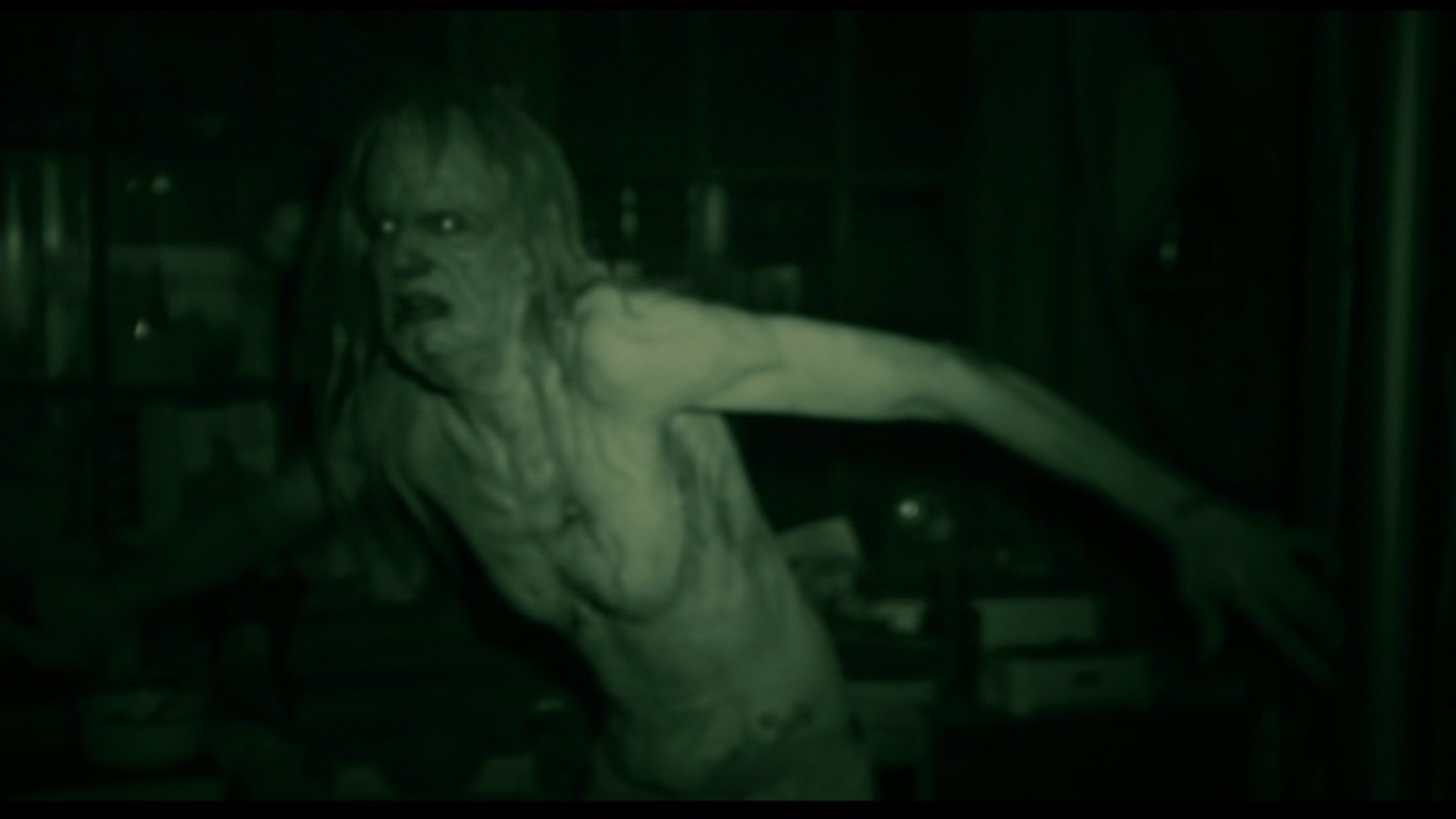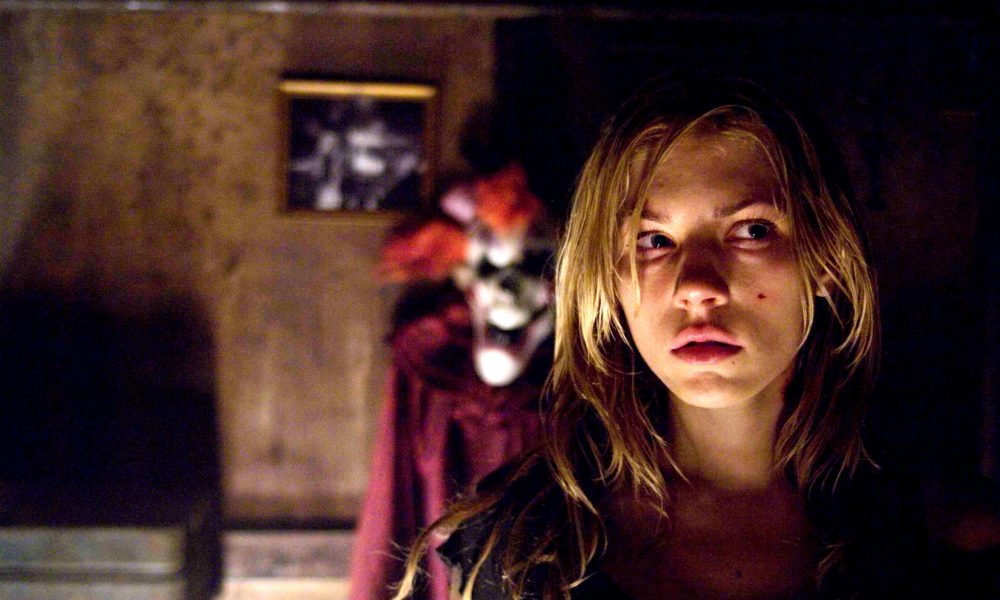The early days of the pandemic were like living in some unholy vortex. Stores were indefinitely shuttered. The streets were eerily abandoned. And the threat of COVID lurked around every corner. While it has been four years since those rudimentary times, and we’ve returned to some normalcy, the danger still exists in hushed whispers and the shadows that line our periphery. When I recently reflected back upon 2020, I couldn’t help but recall a pair of apocalyptic-style films that perfectly capture the paranoia and the fear that an outbreak breeds – Barry Levinson’s The Bay and John Erick Dowdle’s Quarantine.
Mutilated bodies, shared delusions, and guttural terror. I shudder to think about the last four years of living. What could have lasted only a few weeks – remember when the lockdowns were expected to last just a fortnight? – turned into four years lost. The mere notion that the pandemic shaved literal years from our lives boggles my mind as much as it strikes fear in my body.
The frenzy of shopping for toilet paper and wearing the most absurd masks is what I remember most about those early days when we knew so little and were scared of so much. We were in a panic and didn’t know how to cope with any of it. That distress and misery permeate both The Bay and Quarantine, two strands to the same thread.
Told through reporting intern Donna Thompson’s (Kether Donohue) eyes, in addition to a collage of handheld cameras, cellphone static, and Skype calls, The Bay exposes an outbreak in real-time. From the moment the first woman is seen covered in disgusting boils and lesions, the film unravels the tragedy of Claridge, Maryland, a sleepy, idyllic seaside town. The residents are celebrating the 4th of July, as everyone makes their way downtown to join in on festivities, from dunking tanks to crab-eating challenges.
The sun blisters overhead, and nothing appears to be amiss. Well, except for two researchers who turned up dead weeks prior. Mayer John Stockman (Frank Deal), who clearly took a page from the Jaws mayor’s playbook, brushes off all concerns about the water supply. He even raises a plastic cup to the new filtration system that has allowed local chicken farming to thrive and boost tourism. Despite loads of chicken feces, which is full of hormones and steroids, being dumped into the lake every year, no one shows concern for what that could mean for organisms and creatures growing below the water’s surface.
Downtown, one woman shows signs of being eaten alive from the inside out, but the outbreak is happening all over town. Several women are found with similar boils and lesions and are believed to be victims of domestic violence – at least at first. Before long, however, it becomes clear that what the town is dealing with is something unknown, insidious, and altogether catastrophic.
Once the panic sets in, the town devolves into chaos. Fear courses in the residents’ veins, as they flock to the local hospital in the hopes of being treated. Soon enough, it’s overrun, with too many patients for the medical staff to handle.

‘The Bay’
Covid struck similarly. Countless hospitals all over the country quickly became overwhelmed with patients seeking care. People were scared and frantic, hiding behind heightened emotions as a way to mask their deepest insecurities and fears of the unknown. In the early days, that fear invaded every part of our collective existence. We were so afraid of catching such an infectious disease we even used sanitation wipes to clean off our groceries and other household items – remember those days?! Films like Sick and Host capture this time in our society best; both films bottle up the fear and paranoia of navigating truly unprecedented times.
Barry Levinson engages with primal human instinct, as well. As the world as they know it crumbles around them, on the verge of a full-blown apocalypse, The Bay’s townsfolk enter into beast mode, resorting to the most grotesque behaviors. But what other options do they have? Many beg to be killed, as a group of victims scream to local police, who are then infested themselves. As society crumbles, so does one’s clear-headed understanding of what it means to fight for survival, as the afflicted melt into a pile of bloodcurdling screams and dripping, oozing fleshy bits.
Masked behind a vicious outbreak, The Bay expresses what happens when humankind loses a grip on compassion and consideration. The townspeople become so consumed by their own selfishness that the flesh-eating organism – as we come to learn, a seaborn isopod is responsible for the pandemic – has very few roadblocks to spread freely and easily. Fueled by emotion rather than logic, the residents of Claridge, Maryland contribute to the problem unwittingly.
It’s only after quarantine, and the dumping of gallons of chlorine into the bay, that the threat is extinguished. But the survivors will never be the same. Their souls are scarred beyond recognition, even Donna as she emotionally recalls the experiences in great detail. Over a video call, she’s clearly still rattled by the whole ordeal, forever damaged and broken. With an ongoing pandemic (this is what they call normal these days, huh), it’s hard not to see oneself mirrored in The Bay’s terrifying story: innocent people driven to madness by a contagion that mutilates everything in its path. But that’s not the most horrifying part. It’s what happens to mankind when placed within such volatile conditions.
It’s the fear that breeds the worst in humanity… The fear that you hold everyone else’s lives in your hands… The fear that your end may be coming soon… After all, we’re all scared of death underneath it all. Even as a pandemic slowly fades away, nothing is as it was. You see yourself in a different light, bound by the ideals you adopted during near-apocalyptic times. You see the world through a drastically blurry and contrasting lens. And you’ll likely never look at your neighbor the same way again…

‘Quarantine’
In John Erick Dowdle’s Quarantine, a remake of the 2007 film [REC], similar themes and ideas can be extracted from the brutally harrowing tale. Upon a recent revisit, Quarantine is far better than its reputation would have you believe. It’s a suffocating indictment of humankind, finding the characters clawing their way through the depths of existence as they not only struggle to make sense of their new reality but to find a way out.
A young reporter named Angela Vidal (Jennifer Carpenter) is tasked with shadowing a local fire department for the night. Over the moon for a potentially exciting story, she and her cameraman Scott Percival (Steve Harris) spend the evening getting to know the firemen of a local fire department – getting an inside glimpse into their routine, from sleeping arrangements to even what the shower layout looks like. As the night drags on, Angela grows weary and bored, hoping that a call will come in to whisk her out into the feverish night.
A call eventually comes in, an apparent violent encounter with an older woman. Residents of her building heard bloodcurdling screams coming from somewhere high above. Once the firemen and police arrive, Angela and Scott enter the building–and it’s the last time they’ll ever feel the cool night air on their skin. Once inside, the police attempt to understand what went down, and what they discover is something beyond their worst nightmares.
As we come to learn, a vicious strain of rabies has begun spreading among the residents. Many show symptoms within minutes of being bitten or coming into contact with blood and other bodily fluids. One resident, a veterinarian named Lawrence (Greg Germann), spots the signs after two men succumb to gnarly bites. He’s never seen anything like it. It’s a monstrous case of rabies that humanity is simply ill-equipped to handle.
Looking back now, Covid saw society practically eat itself alive. Despite previous outbreaks, such as the Spanish Flu, we just didn’t know how to cope and deal with such a massive contagion. Government officials bungled the whole thing, which allowed it to drag on now into its fourth year. Four years of fear and paranoia wrapped up in masks, hand sanitizer, and staying six feet apart. Life might be back to “normal” but the threat of catching the disease remains a constant reminder that things will never be “normal” ever again.
The “normal,” as we see in Quarantine, manifests itself in the entire building being sealed off, as ground zero of a savage, could-be worldwide pandemic. The only way to stop it from spreading is to quarantine everyone in the building until brain tissue samples can be taken from everyone inside; easier said than done, as the residents, much like those in The Bay, degenerate and lose themselves in a flurry of panic, misinformation, and uncertainty.

‘Quarantine’
Angela and Scott continue filming everything so the world knows the truth, giving a reason for Scott to be carrying around a giant newsroom camera despite the rabies-infested pouncing on him from the shadows. The night seems to unravel terribly slowly, as one-by-one, the residents succumb to their heightened emotional states and turn on one another. The chaos propagates more fear. When all communication is cut off in the building, in addition to the power, the darkness consumes them. It’s within such claustrophobic darkness that their worst anxieties about life, death, and the disease of unknown origin grow exponentially until no one can avoid the inevitable. No one is getting out of the building alive; that’s made clear when several residents attempt to climb out of windows and are gunned down by snipers on neighboring rooftops.
Once a determined and capable thinker, even Angela crumples into a puddle of whimpers and tears as the truth of the situation sets into her bones. Leave it to Jennifer Carpenter to spend the second half of the film screaming until her lungs burst. Even those as well-meaning and strong-willed as Angela can’t handle this new reality, one riddled with flesh-tearing tormentors whose sole purpose is to sew discord and foam-mouthed death.
Quarantine gets little credit for the chilling scares it fuses into its startling real story about the deterioration of humanity and how we, as human beings, navigate the end of the world. As with the real-life pandemic, which none of us could possibly have predicted, the devolution of mankind is not a farfetched conceit. It’s very real. While the specific details of the film might have been made up for theatrical effect, something harrowing remains beneath the smoke and mirrors. When all the flash is stripped away, Quarantine might just as well be a visual representation of the Covid pandemic: fear and paranoia propelling humanity to careen over the cliff.
In tackling very different pandemics, The Bay and Quarantine manage to successfully and brilliantly capture humanity on the verge of collapse. In both circumstances, humanity reacts the same way – pushed to the edge, we turn to rash emotions rather than any levelheaded logic. We become entangled in our own narrow-sighted needs that we fail to see how those actually contribute to the problem, rather than offer a viable solution.
As we’ve witnessed both in horror cinema and in real life, fear doesn’t adhere to any cultural or economic boundaries. When the dark pushes in from every angle, and we seemingly have no way out of the mess, fear punishes us all. Fear motivates. Fear inspires. And more importantly, fear can ravage the body if you let it. Hopefully, films like Quarantine and The Bay can serve as warnings about what happens when the telltale signs are ignored and the powers that be demonstrate a severe lack of morality or self-awareness.
Or, you know, we can just… look around.
Double Trouble is a recurring column that pairs up two horror films, past or present, based on theme, style, or story.
